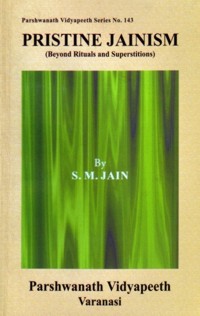In life time of Tirthankar Mahaveer and subsequently till his omniscient successors (Kevali, Shrutkevali) there was no tradition of written scriptures. Knowledge was passed on orally. Scriptures were written later on. The saints who wrote scriptures were not omniscient (Kevali) and therefore could not be as knowledgeable as omniscient beings (Kevali). Knowledge imparted by Mahaveer Swami was very elaborate running into several hundred millions of stanzas classified into twelve branches of knowledge (Dvadashang). Last branch i.e. twelfth one (Anga) was divided into fourteen sub branches (Purvas). It was Dharsenacharya who first asked his disciples to reduce in writing the little part of immense knowledge he had been able to retain in his memory. He was not omniscient. He knew only a small fraction, only a part (Fourth Prabhrat, Prakriti) of one Chapter (fifth Vastu Adhikar) of one sub branch (Agrayani Purva). The elaborate treatises Shatkhandagam, Dhavla, Jai Dhawla, Maha Dhawla, Gommattsar, Labdhisar etc are expansion of small part of vast knowledge, remembered by Dharsenacharya. Likewise Gundharacharya remembered only third Prabhrit (part) of tenth chapter (Vastu Adhikar) of one sub branch (Gyanpravah Purva). Treatises Panchastikaya, Samayasar, Niyamsar, Ashtapahud etc are expansion of little knowledge retained by Gundheracharya. Thus the available Jain literature is not what omniscients (Kevali) knew and said but only a fraction retained in memory and expanded according to capacity of writers, saints and circumstances they lived in. Therefore the available knowledge is not perfect, free from flaws and contradictions as that of omniscients (Kevali). There are contradictions in eminent saints also. A particular saint wrote in a particular situation and his version might have been right and relevant in that particular situation. Another saint's version might be different in a different situation. It is interesting to note that readers of Quran are instructed to read different portions with reference to contexts to understand it properly. There are many things, which are relevant for a particular point of time but not for all times. In the string of time-specific pearls of knowledge, there is an underlying thread of fundamental principles and tenets which are relevant for all times and situations. It is necessary to reach this time less thread of knowledge hidden under the glare of time-specific pearls of knowledge. The search is arduous but must. Even the time and situation specific pearls of knowledge, some are genuine and many are fake and illusory. Many concepts which are quite contrary to fundamentals of Jainism have been accepted and incorporated under compulsions of prevailing situations because of non-Jain rulers, shaivite and brahmanical onslaughts and fierce invasions and inhuman atrocities of Shakas, Huns, Mohammedan and other invaders.
Pristine Jainism : Authenticity of Scriptures
Author:
 S.M. Jain
S.M. Jain
 S.M. Jain
S.M. Jain
Published: 06.05.2012
Updated: 09.05.2012
Updated: 09.05.2012
Sources
| Title: | Pristine Jainism (Beyond rituals and superstitions) |
| Publisher: | Parshwanath Vidyapeeth, Varanasi, India |
| by: | Prof. Sagarmal Jain |
| Edition: | 2003 |

Page glossary
Some texts contain footnotes and glossary entries. To distinguish between them, the links have different colors.
Page statistics
This page has been viewed 929 times.